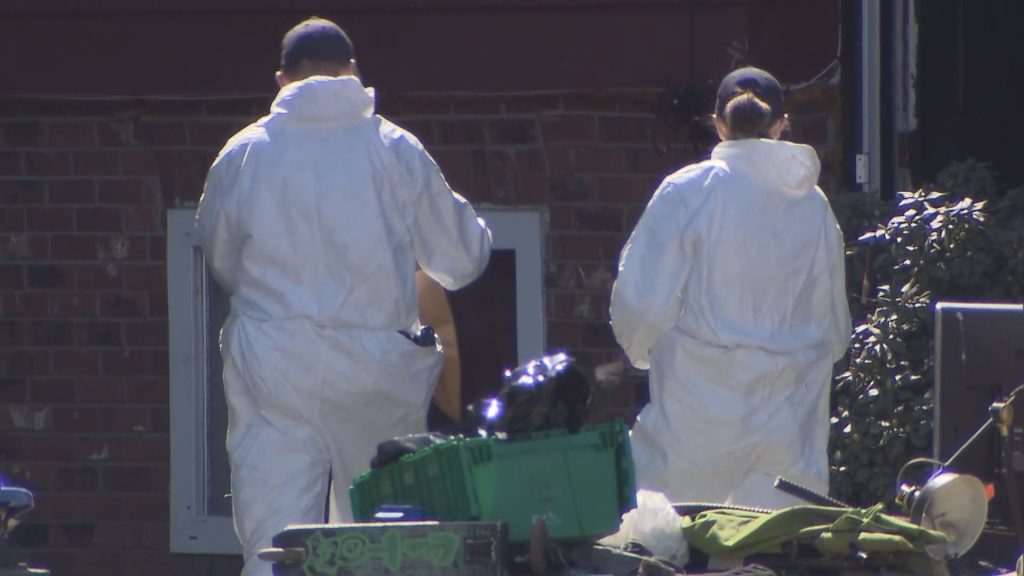Anti-Black racism: The story of Africville
Posted July 22, 2020 12:12 pm.
Last Updated July 23, 2020 4:36 am.
CityNews has launched an online series that documents Canada’s anti-Black racist history, providing you with written snapshots that highlight different moments. You can also read the first installment about the Immigration Act of 1910, the story of Toronto’s first Black politician and the story of Marie-Josèphe Angélique and the 1734 fire of Old Montreal
———
The village of Africville was founded in the mid-18th century, just north of Halifax.
The village was populated by African-Canadians and was a thriving seaside community before it was systematically demolished by the Halifax government in the 1960s.
The founding of Africville
African people held as slaves built much of the city of Halifax, which was founded in 1749.
This Black community lived a few kilometres north of the city, on the southern shore of the Bedford Basin in the area that came to be known as Africville.
However, the first official record of Africville is from 1761, when the land was granted to a number of white families.
Those families included men who imported and sold enslaved African men and women and it is likely many Black families lived in the area, which was given the nickname “African Village.”
There is also evidence to indicate that Africans from Jamaica who escaped enslavement, called the Maroons, moved to the basin in 1796 when they were resettled in Nova Scotia by the British government. (Note: The word ‘maroon,’ which is derived from the Spanish word ‘cimarrones’ or mountaineers, was historically used to describe the Jamaican slaves who escaped from Spanish-owned plantations into the mountainous areas of Jamaica).
In addition, Black refugees from the War of 1812, many of whom were once enslaved in the Chesapeake area of the United States, also lived in the area.
Black settlers William Arnold and William Brown bought land in Africville in 1848. Other families soon followed and by the next year, the village was home to about 80 residents.
Scroll through archival photos of Africville from the Halifax Municipal Archives below:

Community development
The Seaview African United Baptist Church opened its doors in 1849 and soon became the centre of the village.
It was called “the beating heart of Africville,” holding various events including baptisms and Easter sunrise services, which were attended by both Black as well as white Nova Scotians.
A school was opened in Africville in 1883, after a lot of petitioning from residents. Before the school, a local resident was teaching children in the village.
Job opportunities for Black people in Halifax, where they faced anti-Black racism, were limited to domestic help or porters on trains.
Residents in Africville, however, ran their own fishing businesses or farms and many opened small stores toward the end of the 19th century.
Africville was also a culturally significant place, with its own hockey team — The Africville Brown Bombers. They played in the Color** Hockey League of the Maritimes, which was largely run out of Africville. (Note: The word ‘color**’ is an archaic term now deemed offensive, but was used for the league at the time as it was separate from the white league.)
It was also home to singer Portia White and boxer George Dixon — the first Black boxing world champion.
Denial of services and funding
While the City of Halifax collected taxes from Africville, the village saw none of the benefits afforded to taxpayers including paved roads, sewers or running water.
Municipal services like garbage collection, police protection and public transportation were non-existent all the way into the first half of the 20th century.
In addition, throughout the latter half of the 1800s, the City of Halifax chose to place their “undesirable” facilities in Africville including slaughterhouses, a fertilizer plant, the Infectious Diseases Hospital, Rockhead Prison and disposal pits for human waste.
A railway extension was cut through the village in 1854 and many homes were expropriated and destroyed, with many saying they weren’t paid for their land. Even more land was taken over for the railway in 1912 and the 1940s.
The City of Halifax declared that Africville would “always be an industrial district” in 1915 — a decision many believed was based on anti-Black racism.
Two years later, plans to transform the village into an entirely industrial zone were shelved due to the Halifax Explosion, when two ships collided in the city’s harbour — one of them a munitions vessel full of explosives, on its way to battlefields in the First World War.
The disaster is considered one of the largest man made explosions pre-dating the atomic bombs in 1945 and it wiped out the north end of Halifax and damaged Africville. Close to 2,000 people were killed, another 9,000 were injured and 25,000 were left homeless.
The City of Halifax did not survey Africville for damage but as per oral history, several homes were badly damaged and lost their roofs.
Even though millions of dollars poured in due to a global relief effort, none of the money went to rebuilding Africville.
All through the 1930s, Africville residents continued to petition the city for basic services like running water, electricity, sewage disposal and a cemetery — requests which were, by and large, denied.
An open-pit dump was built in Africville in 1950, even though it was considered a “health menace” and unacceptable to residents in white-majority communities like Fairview.
Decline and destruction of Africville
In 1947, the City of Halifax revived and approved plans to turn Africville into an industrial zone.
The school in Africville was closed in 1953 when Nova Scotia de-segregated its school system. Many Black schools across the province were closed and Black students were sent to the nearest white school. Africville students went to school in Halifax where they faced discrimination and racism and were put into “auxiliary” classes with poor funding.
Reports prepared for city council in 1956 and 1957 recommended rehousing residents to make way for industrial projects.
The people of Africville were strongly against relocation and wanted to improve their existing community, but Halifax council voted to remove what they called “dilapidated structures” in the area.
By the time the 1960s rolled around, Africville was called a slum by white Halifax residents and was seen to be built around the dump by scavengers — which possibly made it acceptable to demolish it.
The first plot of land was taken over in 1964 and over the next five years, homes were razed to the ground lot by lot. Many homeowners weren’t given notice and their homes were bulldozed without their permission.
The Seaview United Baptist Church was destroyed in the spring of 1967, in the middle of the night.
The last property was demolished in 1969 and the rest of Africville’s 400 residents left the area.
The land where Africville once stood was converted into the Fairview Container Terminal, ramps for the A. Murray MacKay Bridge and private housing. The central area was tuned into a dog park named Seaview Park.
While residents were promised “urban renewal” and better housing in Halifax, many were moved to derelict housing or rented public housing.
Africville residents faced discrimination and stigma in Halifax, which was further compounded by being moved to the city in dump trucks.
In Halifax, former Africville residents found it difficult to find housing with the paltry sums they had been paid for their land and jobs were hard to come by, with businesses refusing to hire Black people.
After Africville
The Africville Action Committee was formed in 1969 to keep the community alive and seek redress for the injustices they suffered.
A former resident, Eddie Carvery, returned to the site of Africville in 1970 in protest, demanding a public inquiry and compensation for former residents. His protest lasted, on and off, for more than 50 years. His protest camp was dismantled in November 2019 and is considered one of the longest civil rights protests in Canada’s history.
In 1972, four elders from the Seaview United Baptist Church organized the first gathering of the community since they had been relocated, with a church service and picnic.
A decade later, in 1982, the Africville Genealogy Society was formed for the same reasons as the action committee in the late 60s. The following year they planned a community gathering called the “Africville Reunion,” which is now an annual event that is still held every July. Many former residents and their descendants camp on the site of their former homes.
The site was declared a National Historic site in 1996, with a citation that called it “a site of pilgrimage for people honouring the struggle against racism.”
In 2010, Halifax’s mayor at the time apologized for the destruction of the once prosperous Africville community and a replica of the Seaview church was built as a museum in 2012. The area was named Africville Park.
“The exhibits within the Africville Museum invite visitors to walk through the history of Africville, from thriving village on the banks of the Bedford Basin to the dislocation,” says the museum’s website.
The Africville Heritage Trust manages the museum and the voluntary board is made up of a majority of Africville family members. It is both a place for former residents to connect and where other Nova Scotians and tourists can learn about Africville.
The Museum is the first stage of the Africville Project, which will later include an Interpretive Centre.
On Nova Scotia Heritage day this year, the provincial government announced that a bell that once hung in the original Seaview church would be placed outside the Africville Museum. It survived the demolition and was kept safe at a church in Beechville for over 50 years.
Sources: The Canadian Encyclopedia, Africville Museum










